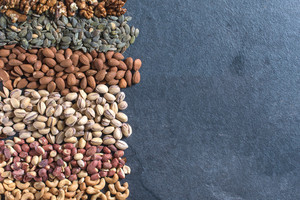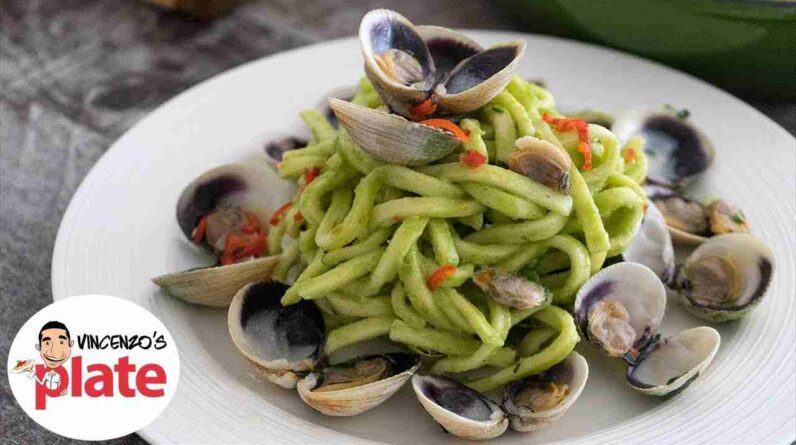If you’re anything like me, you know that Italian cheese is the crowning jewel of any dish, be it a simple salad or a plate of richly sauced pasta. But as we sigh blissfully with every bite, we should consider what these delectable cheeses are contributing beyond flavor. Let’s dive into the nutritional treasures hidden in some of Italy’s most beloved cheeses, and trust me, this is a guilt trip you won’t mind taking.
First things first, Italian cheeses are a powerhouse of calcium, which is pivotal for bone health. As we twirl that forkful of spaghetti topped with Parmigiano-Reggiano, we’re not just satisfying our cravings but also giving our bones some love. But here’s the kicker – many Italian cheeses, such as ricotta and mozzarella, contain high-quality protein, essential for muscle repair and growth. Feeling virtuous yet?
Moving on to the fats – and before you frown, remember that not all fats are created equal. Cheeses like Provolone and Gorgonzola are adept at providing those good monounsaturated fats. And before I forget, ever heard of omega-3 fatty acids? Those brilliant compounds supporting heart health and brain function are riding shotgun in some of your favorite formaggio.
Now, let’s talk vitamins and minerals – because Italian cheese isn’t just a pretty face on a charcuterie board. Vitamins A and B12 join the soiree, particularly in Pecorino Romano, championing eye health and helping in red blood cell formation, respectively. Magnesium and zinc are also gatecrashing the party, with Taleggio waving their flags, all in the name of immune system boosts and energy metabolism.
But before you go and replace all your meals with cheese (tempting, I know), remember we’re talking about a balanced approach here. Portion size is key – you can have too much of a good thing, after all. Incorporating a variety of Italian cheeses into your diet means you can enjoy the spectrum of flavors and textures while reaping the diverse nutritional benefits.
To keep it light and breezy, pair your cheeses with foods that complement their richness. A fresh Caprese salad with mozzarella, tomatoes, and basil drizzled with olive oil is a perfect example. There’s harmony in this classic pairing, allowing the cheese to shine without weighing you down.
And for the culture vultures among us, let’s not forget the important cultural norm of moderation that Italians so elegantly epitomize. Cheese is typically enjoyed at the end of the meal in Italy, a practice believed to aid digestion and round off the dining experience with a delicate touch. Eleganza e equilibrio – elegance and balance, that’s the Italian way.
It’s clear that Italian cheeses aren’t just about indulgence; they’re a convergence of culinary delight and nutritional wisdom. So next time you nibble on that sliver of Fontina or spoon out some Mascarpone, take a moment to appreciate the storied history and nutritional prowess nestled within each bite. Buon appetito!
Balancing Flavor and Health in Your Cheese Choice
When we talk about balancing flavor and health in the landscape of Italian cheeses, one might say it’s akin to walking a tightrope. You want to savor that sumptuous, tangy bite that calls your name but without tipping the scales too far out of favor with your waistline or well-being. It’s all about stirring the senses while keeping the nutrition facts in check.
Now, imagine yourself wandering through the bustling streets of an Italian market, each step drawing you closer to the aromatic allure of a cheese vendor. Your instincts crave the sharpness of an aged Parmigiano-Reggiano or the creamy caress of a dollop of Burrata. But the health-conscious angel perched upon your shoulder gently reminds you that biting into these rich flavors is a treat to be relished responsibly.
Fear not, cheese-enthusiasts—moderation doesn’t mean deprivation! Sure, the seductive layers of a buttery Gorgonzola might seem like a siren’s call to your inner epicurean, but let’s not forget that cheese can be a friend to both our taste buds and our bodies. For instance, a little sprinkle of Grana Padano can go a long way in dishes, imbuing them with its nutty essence without drowning them in extra calories.
And what about the treasures of Ricotta, that soft and humble staple of the Italian kitchen? Low in fat yet high in protein, Ricotta dances divinely atop a crispy piece of bruschetta or nestled within a vibrant veggie lasagna. Here’s a cheese that understands the art of subtlety, allowing you to revel in its goodness day after day.
The key to cheese nirvana is finding that slice of heaven between decadence and wellbeing. Want a midday snack? Pair some cherry tomatoes and arugula with slivers of Provolone—a cheese that marries well with the freshness of simple greens, all while keeping your health in mind. Or what about finishing a dinner with a few pieces of fresh, milky Mozzarella di Bufala alongside a crisp salad, allowing the natural flavors to comfort you, guilt-free.
And let’s not overlook the importance of how cheese is weaved into the Italian meal structure. Far from being a solitary character, cheese is often part of a culinary ensemble – a piece in the puzzle of a balanced plate. A thin, melty slice of Fontina in a panini, for example, can lend its rich, creamy texture to the sandwich without hijacking the nutritional script. Or consider a pasta lightly kissed with Pecorino, just enough to tease the palate but not overload on the indulgence.
We’re all about savoring the symphony of flavors that Italian cheese has to offer, but let’s harmonize it with our health goals. Whether we’re dipping into a vibrant pesto for a hint of Parmesan or savoring a Caprese salad garnished with a modest slice of Mozzarella, we’re balancing our love of cheese with a nod to nourishment. So here’s to finding that delectable equilibrium—one where every cheese has its place at the table, neither overplayed nor underappreciated.
Top Italian Cheeses for Daily Consumption

Speaking of cheeses fit for daily consumption, Italian cuisine provides us with a treasure trove of options that are not only scrumptious but also wonderfully versatile. For those ready to embark on a cheese-laden journey, here are some of the top Italian cheeses to savor, each with its own unique charm and flavor profile.
Starting off with an all-time classic, Mozzarella is the epitome of Italian cheese that has made itself a daily staple around the world. Whether it’s pulled fresh from its briny bath for a Caprese salad or melted gloriously atop a Neapolitan pizza, Mozzarella charms us with its delicate, milky taste and soft texture. It’s also reassuringly light, making it an ideal choice for health-conscious gourmands wanting their daily cheese fix.
Next up, Ricotta. This creamy wonder is as versatile as it is delightful. Traditionally made from the whey left over from the production of other cheeses, Ricotta is a low-fat option that still manages to deliver creaminess to dishes. Experiment with it in your morning spread, stir it into pasta sauces, or indulge in a dollop with your favorite fruit for a simple yet elegant dessert. The subtle sweetness of Ricotta lends itself to a myriad of culinary applications from breakfast through to a post-dinner treat.
Then there’s the understated yet exceptional Pecorino Romano. Made from sheep’s milk, this hard cheese packs a punch with its sharp and salty flavor, perfect for grating over pastas and salads. The bold taste ensures that a little goes a long way, allowing you to use it sparingly while still infusing your dishes with a robust flavor profile. As a bonus, Pecorino is rich in calcium and protein, making it an excellent choice for supporting your well-being.
Another cheese that’s a must-try for daily indulgence is Provolone. This semi-hard cheese with a smooth texture comes in various degrees of sharpness, from mild to piccante. Its superb melting properties make it a perfect candidate for grilled sandwiches, layered in casseroles, or even as a savory addition to omelets. Play around with both the mild and sharp varieties to discover the irresistible taste that suits your palate best.
And, of course, who could forget the allure of Parmigiano-Reggiano? Revered as the “King of Cheeses,” this hard, granular cheese is often savored in thin shavings or grated over countless dishes to add a touch of umami. While it’s higher in fat, its savory depth means you can use it sparingly—just a sprinkle transforms simple vegetables, soups, and pastas into culinary masterpieces.
Each of these cheeses has its roots deeply planted in the rich soil of Italian history and tradition. Mozzarella, for instance, hails from the lush Campania region, while the salty tang of Pecorino Romano brings with it whispers of the countryside of Lazio. These cheeses are not just ingredients; they are stories on your plate, full of the culture and love for food that Italy is known for.
Undoubtedly, striking the right balance is key when choosing your daily cheese—opting for a mix of flavors and textures can lead you through an exciting gustatory journey whilst keeping your health in mind. Picture this: a slice of fresh bread topped with ripe tomato, a leaf of basil and a slice of Mozzarella for breakfast; a sprinkle of Ricotta on your lunchtime salad; a few shavings of Pecorino over your evening pasta. Such simple additions can turn everyday eating into a celebration of Italian culinary culture.
Keep in mind, pairing your cheese with fruits, vegetables, and whole grains will enhance both your meal and your mood. After all, it’s the Italian way to bring together the bounties of the land and the craftsmanship of cheese artisans onto your plate. So say “Ciao!” to monotony and “Buongiorno!” to a daily dose of Italian cheese heaven that harmonizes flavor with wholesome eating.
How to Incorporate Italian Cheese into Your Diet
Alright, let’s talk about weaving the magic of Italian cheese into your everyday eating routine. Incorporating cheese into your diet is like adding a pinch of joy to each meal – it’s about elevating the mundane to the divine with just a sliver or spoonful of cheesy goodness. Whether you’re a seasoned foodie or someone who just loves a good sprinkle of Parmesan, there’s an Italian cheese out there waiting to become a regular in your meal prep.
Think of a humble bowl of soup; it transforms into a gourmet experience with a generous grating of Pecorino Romano. And those weeknight omelets? Watch them come alive as they flirt with the melting charm of Provolone. But why stop there? Envision that fresh summer salad you love – it craves the company of cubed Mozzarella to become a true capolavoro, a masterpiece.
And if you’re all about that low-effort, high-reward lifestyle, go for a fuss-free yet fabulous snack—like slices of peach or pear paired with shards of aged Parmigiano-Reggiano. It’s like having your own little bite of la dolce vita at the ready. Or, hey, swap out your ordinary sandwich spread for some creamy Ricotta, sprinkled with herbs and a dash of pepper, for an instant upgrade.
Lest we forget the sheer joy of crafting the perfect cheese plate. It’s not just about throwing together some cheese and calling it a day – it’s an art form. Add some mixed nuts, a variety of olives, a drizzle of honey, and of course, a selection of bread – think crusty ciabatta or crunchy grissini. And there you have it, a feast fit for any day of the week that sings with the flavors of Italy.
Italians are notorious for their passion for food – and that includes cheese as part of a larger culinary canvas. Sure, a cheesy risotto is divine, but have you ever sprinkled some finely grated Grana Padano over roasted veggies? It’s a game-changer. Or what about stirring some melted Gorgonzola into a creamy polenta? Cue the angelic choir.
Now, don’t overlook the joys of baking with cheese. A simple focaccia topped with Fontina and rosemary can whisk you away to a sun-dappled piazza with the first bite. And if you want to add a little twist to your lasagna, try layering slices of Taleggio between the pasta for a luscious melt that’ll make your dinner guests swoon.
Here’s the thing – integrating Italian cheese into your diet isn’t just about the tantalizing tastes; it’s about embracing an entire culture that reveres fresh, quality ingredients. It’s about pausing in the whirlwind of your day to savor a moment, to taste centuries of tradition that have been carefully aged, brined, and crafted into cheesy perfection.
To keep things as authentic as possible, remember to respect the simplicity that Italians so cherish in their cuisine. Let the cheese speak for itself; don’t drown it out with too many competing flavors. Whether it’s a plate of antipasti or a single, perfect slice of Burrata over arugula, the secret lies in the quality of the ingredients and the love that goes into each bite.
Dabble in the joy of cheese without guilt, my fellow cheese enthusiasts. Embrace the countless ways you can bring a sprinkle, a slice, or a dollop of Italy into your everyday fare. Trust me, your tastebuds will thank you, and you’ll soon be saying, “Che bello!” as you bask in the simple pleasure that is Italian cheese.
Storing and Preserving Your Italian Cheese for Everyday Use

Let’s get down to the nitty-gritty of keeping that delicious Italian cheese fresh and fabulous for your everyday indulgence. Knowing how to store and preserve your formaggio treasure trove is essential—after all, nobody wants to find their beloved wedge of Parmigiano-Reggiano has turned into a science experiment gone wrong in the fridge.
Consider this your cheese conserving playbook: for hard cheeses like Parmigiano-Reggiano, Grana Padano, or Pecorino Romano, wrap them up in parchment paper followed by a loose layer of aluminum foil. This method helps the cheese breathe while protecting it from drying out. Always store these beauties in the least cold part of your refrigerator, like the vegetable compartment, to maintain their integrity without turning them into cheese bricks.
Now, let’s talk about the softer, often more perishable stars of the cheese world like Mozzarella, Provolone, and Burrata. Fresh Mozzarella should remain in its brine until you’re ready to use it to keep it moist and heavenly. If it doesn’t come submerged in liquid, create a saline solution (salt water) for it to rest in. Provolone and other semi-soft cheeses, meanwhile, are best kept wrapped in cheese paper—yes, that’s a thing—or wax paper and then placed inside a partially sealed plastic bag to keep them from unwanted fridge odors.
One thing to note: cheese is akin to a living organism. It needs a little TLC and the right environment to continue tasting its best. For your softer cheeses like creamy Gorgonzola or rich Taleggio, a container with a tight lid can be your go-to. Just make sure to first wrap the cheese in wax or parchment paper before closing the lid on the container. This allows the cheese to maintain its proper moisture level without getting too damp or too dry.
If you can’t resist the cuteness of those little cheese igloos—aka cheese storage containers—you’re in luck, because they can be a great option too, especially for cheeses that don’t fare well with tight wrapping. Let’s face it, nobody likes suffocated cheese, so give it some room to thrive.
Remembering to label your cheeses with the date of purchase will help you keep track of their freshness journey. A fine cheese can be like a fine wine, changing and maturing over time, but you’ll want to enjoy it before it passes its prime. A tip from the wise: consider investing in a cheese grotto or cheese cave if you’re really serious about your collection. It’s a bit like having a personal spa for your cheese, where it can relax in optimal conditions until it’s time to shine on your plate.
The last pearl of wisdom is to take your cheese out of the fridge at least half an hour before you plan to eat it. Like a diva needing time to prep before a performance, cheese gives its best performance at room temperature, unveiling its true flavors and aromas for your sensory delight.
So, my fellow cheese aficionados, let these tips guide you in keeping your Italian cheese collection in tip-top shape. Whether it’s tucked safely in your fridge or majestically displayed on your countertop cheese grotto, treat your formaggio friends with care, and they’ll keep your everyday eating experience absolutely magnificent.










